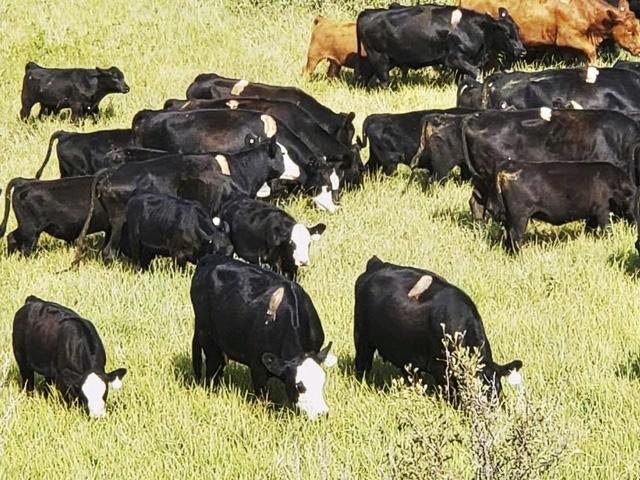Best Blog of the Week
Sort and Cull: Marking Your Cull Cows With Bleach Could Be Costing You
Every fall, ranchers wean their calves and, shortly after, they set up a cow-working day to preg-check their females. It's become common for producers to paint a bleach mark on the females that need to be culled, whether because they're open, late, or broken mouthed. However, this may be a practice that needs rethought as it can be costly to sellers.
To put this into perspective, think about buying a used car. You've got your budget in mind and are willing to put up with a few minor inconveniences; but you still need a good-working car. After driving by a few prospects, you finally found one that matched your criteria. The body was in good condition and it drove smooth, but the seat was worn out. Luckily, you have an uncle who can find a new seat for the car for little to no cost, but the dealer doesn't know that. So, upon bantering back and forth about the car, you use the worn-out seat as leverage to get the used car dealership to whittle down price. And just as this buyer used the worn-out seat as leverage to negotiate the price down on the car, cattle buyers often use the bleach mark as leverage to get cows bought cheaper.
P[L1] D[0x0] M[300x250] OOP[F] ADUNIT[] T[]
Bleach-marking cows is an easy and convenient way for ranchers to mark which cows need to go to town, but when it's also used as a tool against them when it's time to sell, producers may need to rethink how they're marking their cull cows. Instead of bleach-marking cows, producers may consider cutting a notch in the cow's ear tag, bobbing their tail or putting in a new sale tag.
Ken Betschart, Consolidated Beef Producer's Western Marketing Representative, said, "When it comes to selling fats, the closer the market gets to April, the more observant packers become of these marks. They'll sometimes want to knock a $1.00 off the market's weighted average price for them, or they'll require that they sell on the grid, and sometimes they don't take them at all."
Regardless of where these females end up -- whether it's in the feedlot or as re-bred cows -- if they walk in the ring with bleach marks, buyers know that they come with baggage and will use that mark as negotiating power to help drive down the price. However, if ranchers were to mark those same cows with a different type of system -- bobbing their tail, notching their tag, or putting in a new tag -- buyers aren't as likely to notice that mark, which could save cattlemen dollars in the end.
**
Cattlemen are eager for supply and demand mechanics to swing their way, but the market isn't completely free of hurdles as bearish concerns about the U.S. and global economies loom. Hear DTN Livestock Analyst ShayLe Stewart's thoughts on the 2023 cattle market at the all-virtual DTN Ag Summit on Dec. 12-13. Full details available at http://www.dtn.com/…
ShayLe Stewart can be reached at ShayLe.Stewart@dtn.com
(c) Copyright 2022 DTN, LLC. All rights reserved.




